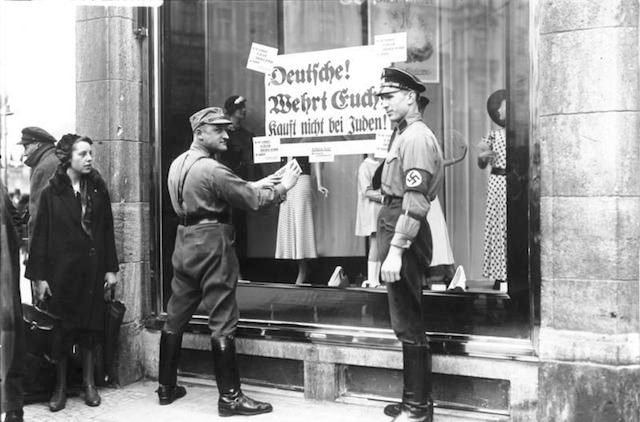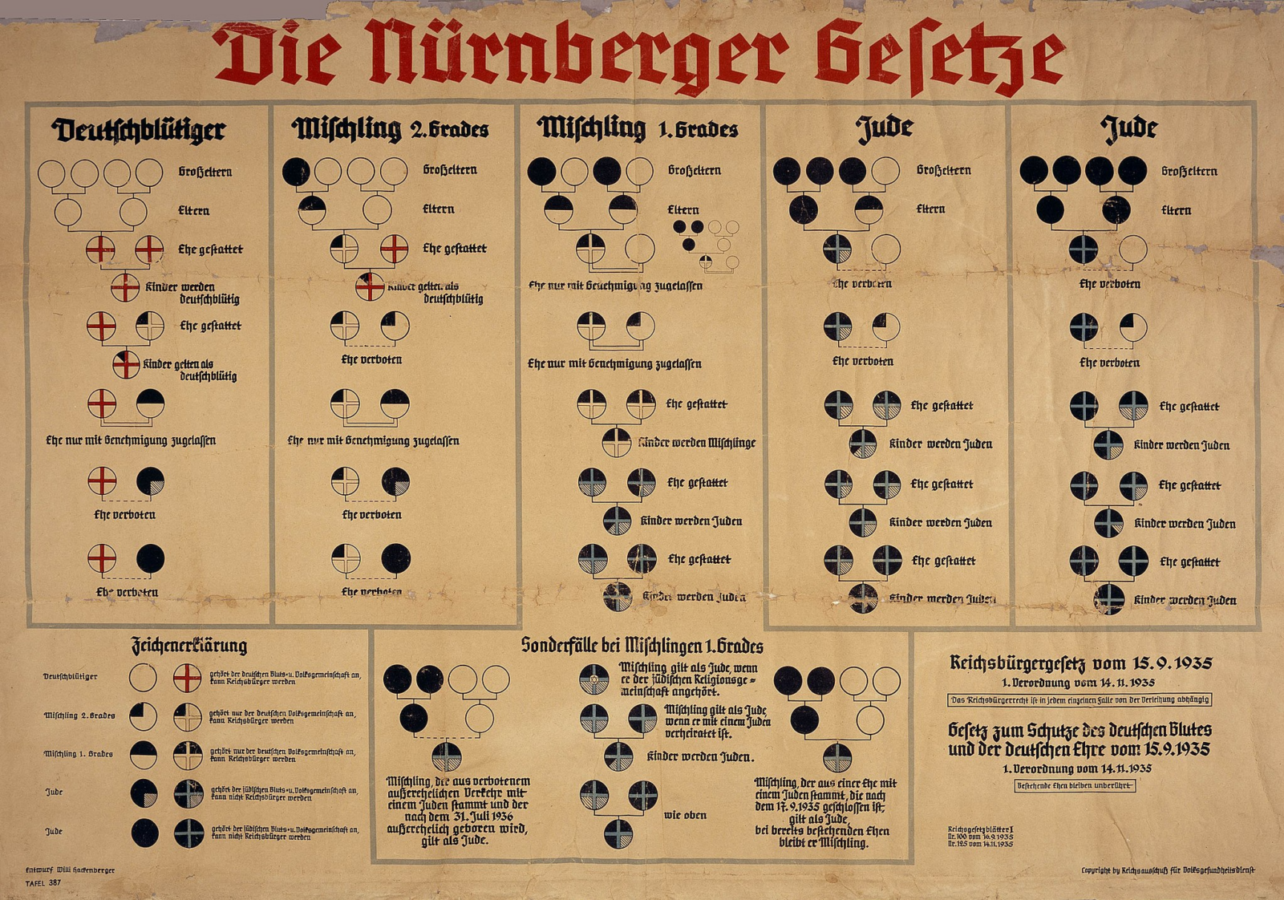Two distinct laws passed in Nazi Germany in September 1935 are known collectively as the Nuremberg Laws: the Reich Citizenship Law and the Law for the Protection of German Blood and German Honor. These laws embodied many of the racial theories underpinning Nazi ideology. They would provide the legal framework for the systematic persecution of Jews in Germany.
Find the full text of the Nuremberg Laws (in English translation) here.
Adolf Hitler announced the Nuremberg Laws on Sept. 15, 1935. Germany’s parliament (the Reichstag), then made up entirely of Nazi representatives, passed the laws. Anti-Semitism was of central importance to the Nazi Party, so Hitler had called parliament into a special session at the annual Nazi Party rally in Nuremberg, Germany.
Reich Citizenship Law
The Nazis had long sought a legal definition that identified Jews not by religious affiliation but according to racial anti-Semitism. Jews in Germany were not easy to identify by sight. Many had given up traditional practices and appearances and had integrated into the mainstream of society. Some no longer practiced Judaism and had even begun celebrating Christian holidays, especially Christmas, with their non-Jewish neighbors. Many more had married Christians or converted to Christianity.

Help us keep Jewish knowledge accessible to millions of people around the world.
Your donation to My Jewish Learning fuels endless journeys of Jewish discovery. With your help, My Jewish Learning can continue to provide nonstop opportunities for learning, connection and growth.
According to the Reich Citizenship Law and many clarifying decrees on its implementation, only people of “German or kindred blood” could be citizens of Germany. The law defined who was and was not a German, and who was and was not a Jew. The Nazis rejected the traditional view of Jews as members of a religious or cultural community. They claimed instead that Jews were a race defined by birth and by blood.
Despite the persistent claims of Nazi ideology, there was no scientifically valid basis to define Jews as a race. Nazi legislators looked therefore to family genealogy to define race. People with three or more grandparents born into the Jewish religious community were Jews by law. Grandparents born into a Jewish religious community were considered “racially” Jewish. Their “racial” status passed to their children and grandchildren. Under the law, Jews in Germany were not citizens but “subjects of the state.”
This legal definition of a Jew in Germany covered tens of thousands of people who did not think of themselves as Jews or who had neither religious nor cultural ties to the Jewish community. For example, it defined people who had converted to Christianity from Judaism as Jews. It also defined as Jews people born to parents or grandparents who had converted to Christianity. The law stripped them all of their German citizenship and deprived them of basic rights.
To further complicate the definitions, there were also people living in Germany who were defined under the Nuremberg Laws as neither German nor Jew, that is, people having only one or two grandparents born into the Jewish religious community. These “mixed-raced” individuals were known as Mischlinge. They enjoyed the same rights as “racial” Germans, but these rights were continuously curtailed through subsequent legislation.

Law for the Protection of German Blood and German Honor
The second Nuremberg Law, the Law for the Protection of German Blood and German Honor, banned marriage between Jews and non-Jewish Germans. It also criminalized sexual relations between them. These relationships were labeled as “race defilement” (Rassenschande).
The law also forbade Jews to employ female German maids under the age of 45, assuming that Jewish men would force such maids into committing race defilement. Thousands of people were convicted or simply disappeared into concentration camps for race defilement.
Significance of the Nuremberg Laws
The Nuremberg Laws reversed the process of emancipation, whereby Jews in Germany were included as full members of society and equal citizens of the country. More significantly they laid the foundation for future anti-Semitic measures by legally distinguishing between German and Jew. For the first time in history, Jews faced persecution not for what they believed, but for who they — or their parents — were by birth. In Nazi Germany, no profession of belief and no act or statement could convert a Jew into a German. Many Germans who had never practiced Judaism or who had not done so for years found themselves caught in the grip of Nazi terror.
While the Nuremberg Laws specifically mentioned only Jews, the laws also applied to blacks and Roma (Gypsies) living in Germany. The definition of Jews, blacks, and Roma as racial aliens facilitated their persecution in Germany.
During World War II, many countries allied to or dependent on Germany enacted their own versions of the Nuremberg Laws. By 1941, Italy, Hungary, Romania, Slovakia, Bulgaria, Vichy France, and Croatia had all enacted anti-Jewish legislation similar to the Nuremberg Laws in Germany.
Reprinted with permission from the United States Holocaust Memorial Museum‘s Holocaust Encyclopedia.



